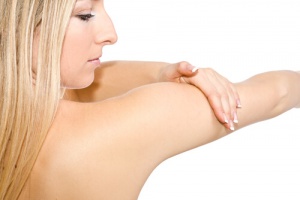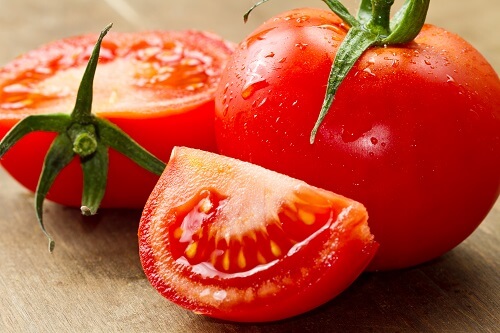Natural Approaches for Eliminating Excessive Hair


Reviewed and approved by the doctor Karla Henríquez
Hirsutism refers to a condition in which women have unwanted, excessive hair on the face and body. This hair is generally dark and thick and usually appears where men grow hair – on the chest, face and back.
A bit of body and facial hair is normal, and the amount varies for each woman. But close to half of women with hirsutism could have higher levels of masculine sex hormones, called androgens. Discover natural remedies for excessive hair here.
Signs and symptoms
The primary symptom of hirsutism is hair that grows in the abdomen, chest and upper lip (hair growth in women that coincides with male patterns). If hirsutism is due to higher levels of masculine hormones, the symptoms could include:
- Irregular menstrual periods
- Acne
- Loss of feminine body shape
- Signs of masculinity, with a deepening of the voice, male-patterned baldness, dilated clitoris, enlarged shoulder muscles.
Hirsutism is caused by Cushing’s disease, and could include the following signs and symptoms:
- Obesity, especially around the mid section
- High blood pressure (hypertension)
- Diabetes
- Hair thinning
How can you address hypertension naturally? Learn more:
5 Natural Methods to Lower Blood Pressure
Causes of excessive hair
Around half of the women with hirsutism have high levels of the masculine sex hormone called androgens. These high levels could be caused by:
- Polycystic ovarian syndrome (PCOS), which could also cause infertility.
- Tumors in the suprarenal glads and ovaries.
- Cushing’s disease.
- Medications that could cause hair growth.
- Anabolic steroids.
- Danazol, which is used to treat endometriosis.
Women with hirsutism could sometimes experience normal levels of masculine hormones. If no underlying condition is found, then doctors do not know what causes the hirsutism.
Learn more about PCOS here:
Polycystic Ovarian Syndrome Treatment
Risk factors
The following factors could increase one’s risk of hirsutism:
- Genetic. Some conditions that cause hirsutism can be inherited genetically.
- Ethnic origin. Women from Europe, the Middle Eat, and south Asia are more prone to developing this condition.
Natural diet tricks
Diet
This nutritional advice could help women maintain a good weight, which could help lower androgen levels in the body:
- Eat foods with antioxidants, like fruit (like blueberries, cherries and tomatoes) and vegetables (like pumpkin and peppers).
- Avoid refined foods like white bread, pasta, and especially sugar.
- Eat less red meat and more lean meat, cold water fish, tofu (soy, if you aren’t allergic), or beans for the protein.
- Use healthy oils in food, like olive or vegetable oils.
- Reduce or eliminate trans fats found in commercially baked products, like cookies, salty crackers, cakes, french fries, onion rings, doughnuts, processed foods and some margarines.
- Avoid alcohol and tobacco.
- Drink 6 to 8 glasses of water a day.
- Exercise at least 30 minutes a day, 5 days a week.
Using herbs to minimize excessive hair
Herbs strengthen and tone the body’s systems.
Just like with any therapy, you should work with your doctor before starting any treatment. You could use herbs like powdered extracts (capsules, powders and teas), glycerine extracts, or tinctures (alcohol extracts).
Unless otherwise indicated, you should make teas with 1 teaspoon of herb per cup of hot water, 5-10 minutes for leaves and flowers, and 10-20 minutes for roots. Do not take supplements if you are pregnant or breastfeeding, or if you plan to get pregnant.
Women with a history of breast, uterine, or ovarian cancer, or other hormone-related conditions, should not take these supplements unless under medical supervision.
Which herbs can be used?
- Saw Palmetto (serenoa repens): this herb has anti-androgenic effects, which means that it may reduce masculine hormone levels in the body. It is usually suggested to combat polycystic ovarian syndrome, although there is little scientific evidence on its efficacy.
- Saw Palmetto could increase the risk of bleeding. If you take blood thinners, ask your doctor before consuming saw palmetto. Also ask your doctor if you take any hormone medication.
- Chaste tree (Vitex agnus castus) also has anti-androgenic effects.
- Chaste tree could interfere with some anti-psychotic pharmaceuticals, as well as some Parkinson’s medications.
- Black cohosh (Actea racemosa) is your third herbal option. Do not take black cohosh if you have any sort of liver disease.
- Black cohosh could increase the risk of blood clotting, so you should also avoid it if you have any blood clotting disorders.
- Green mint tea (Mentha spicata): This remedy should be taken in one cup, twice a day.
- A preliminary study found that women with hirsutism that drink green mint tea had less testosterone (a masculine hormone) in the blood.
- Researchers think that the tea could reduce minor hirsutism symptoms.
- Another study found that green mint tea reduces androgen levels in women that have polycystic ovarian syndrome.
Using acupuncture

One small study on women with hirsutism found that acupuncture reduces both hair density as well as excessive hair length.
It also reduced testosterone levels, the male hormone. More studies are needed, however, to determine whether acupuncture is right for hirsutism.
These methods for combating hirsutism can improve symptoms. Over a long period of time, meditation can reduce hair growth, but generally doesn’t remove existing hair in the face and body.
Some beauty techniques, like laser hair removal, waxing, etc., could reduce unwanted hair as well.
All cited sources were thoroughly reviewed by our team to ensure their quality, reliability, currency, and validity. The bibliography of this article was considered reliable and of academic or scientific accuracy.
- Tiwari, S. (2008). Plants: A rich source of herbal medicine. Journal of Natural Products.
- Patel, S., Dixit, V. K., Chauhan, N., Sharma, V., & Thakur, M. (2015). Hair Growth: Focus on Herbal Therapeutic Agent. Current Drug Discovery Technologies. https://doi.org/10.2174/1570163812666150610115055
- Prendergast, P. M., & Shiffman, M. A. (2012). Aesthetic medicine: Art and techniques. Aesthetic Medicine: Art and Techniques. https://doi.org/10.1007/978-3-642-20113-4
- Kole, P. L., Jadhav, H. R., Thakurdesai, P., & Nagappa, A. N. (2005). Cosmetics potential of herbal extracts. Natural Product Radiance.
This text is provided for informational purposes only and does not replace consultation with a professional. If in doubt, consult your specialist.









